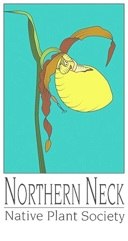Plant of the Month September 2024: Sweet Goldenrod
Sweet Goldenrod, Solidago odora
2024 September Plant of the Month
Northern Neck Chapter of the Virginia Native Plant Society
by Betsy Washington
Sweet Goldenrod attracts a variety of pollinators like this Gray Hairstreak (By Denise Greene)
Sweet or Anise-scented Goldenrod is one of the earliest fall blooming Goldenrods to grace our open areas including open woods, fields, powerline cuts and roadsides each fall. Its golden plumes light up much of the Eastern United States from New Hampshire south to Texas on dry, often sandy, nutrient-poor soils. In Virginia it is common in the Coastal Plain, frequent in the southern and central Piedmont, but infrequent elsewhere. Sweet Goldenrod is easily recognized by the licorice or anise-scented foliage, especially when crushed. This lovely goldenrod has 2 – 4’ tall, arching stems with lance-shaped, narrow, untoothed leaves up to 4” long that taper to a point at both ends and attach directly to the stem without a stalk. Look closely and you can see the parallel veins and translucent dots or glands along the leaves that produce the licorice scent. The arching stems are topped with showy terminal panicles of golden flowers. The individual flowers are clustered in rows on the upper side of the feathery plumes and each flower is only 1/4” wide with 3 – 7 ray florets surrounding 4 – 7 tubular florets – somewhat like a miniature daisy. The flowers are rich in nectar and pollen and attract several specialist bees that depend on the pollen of goldenrods to feed their offspring. Queen Bumblebees and honeybees depend on the nectar to enhance fat supplies for the winter. Many other pollinators, including butterflies seek the abundant nectar in preparation for migration and over-wintering, including migrating Monarchs. Like other Goldenrods, Sweet Goldenrod is host to over 100 species of lepidoptera (moths and butterflies) whose caterpillars depend on the leaves of goldenrods.
This lovely and well-behaved goldenrod makes a wonderful garden plant with its clump forming habit but does not spread aggressively like some others. Sweet Goldenrod prefers full sun and average to dry well drained, acidic soils. It tolerates dry, nutrient poor soils as well as sandy and clay soils and light shade. Not only is it showy in a garden border, but it is also well suited to open woodland edges, meadows, and butterfly or cottage gardens.
You can deadhead the spent flowers lightly to prevent them from seeding around but the songbirds will miss out on a favored source of late fall-winter seeds. As a bonus, like many goldenrods, it is relatively deer and pest resistant.
Sweet Goldenrod has long been used medicinally and as flavorings. In fact, the scientific name Solidago, means to “make whole”, referring to the many healing properties of the Goldenrod genus. The dried leaves were used as flavorings and to treat wounds, ulcers, and urinary disorders and as a stimulant. Further, the dried leaves and flowers were used by the early colonists to make a flavored tea and it is reputed to be one of the ingredients along with New Jersey Tea leaves, used to make tea during the Boston Tea Party. The anise-scented tea was used medicinally to “calm the nerves”, reduce fevers and treat colds.
Look for it in dry sandy open woods, especially pinelands and oak-pine forests and other fire-maintained areas and along roadsides and powerline cuts. And invite this early fall bloomer and well-behaved goldenrod into your garden to “calm your nerves” and provide a profusion of blooms and pollinators! Be sure to crush a leaf or two while observing the crowds of pollinators and enjoy the wonderful fragrance.
Our Fall Plant Sale will feature Anise-scented Goldenrod along with six other species of beautiful Goldenrods, on Saturday, Sept. 7th from 12 – 3 and on Sunday, Sept. 8th from 1 – 3. Members only Presale on Friday, Sept 6 – 2:30 – 4:30. Join our Chapter during the Sale and get a free American Beautyberry for your garden while they last! We will have over 1300 specimens (130 species) of often hard to find native plants. The Plant Sale will be held at Good Luck Cellars, 1025 Good Luck Road in Kilmarnock.
Showy branched terminal flower panicles light up a garden (by Denise Greene)
Detail of lower foliage – we need scratch and sniff feature! A great ID character! (by Betsy Washington)
Flower panicle gracing our roadsides in late August. (by Betsy Washington)




